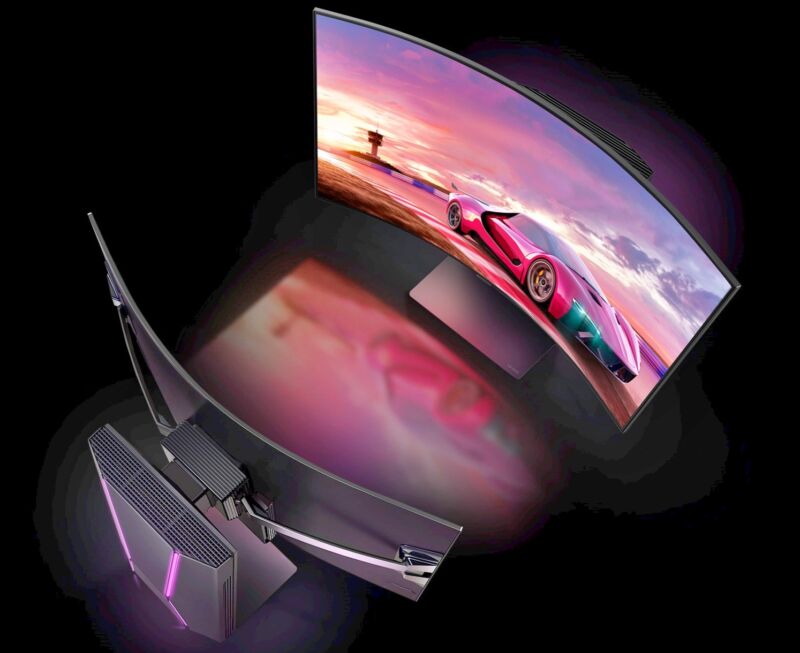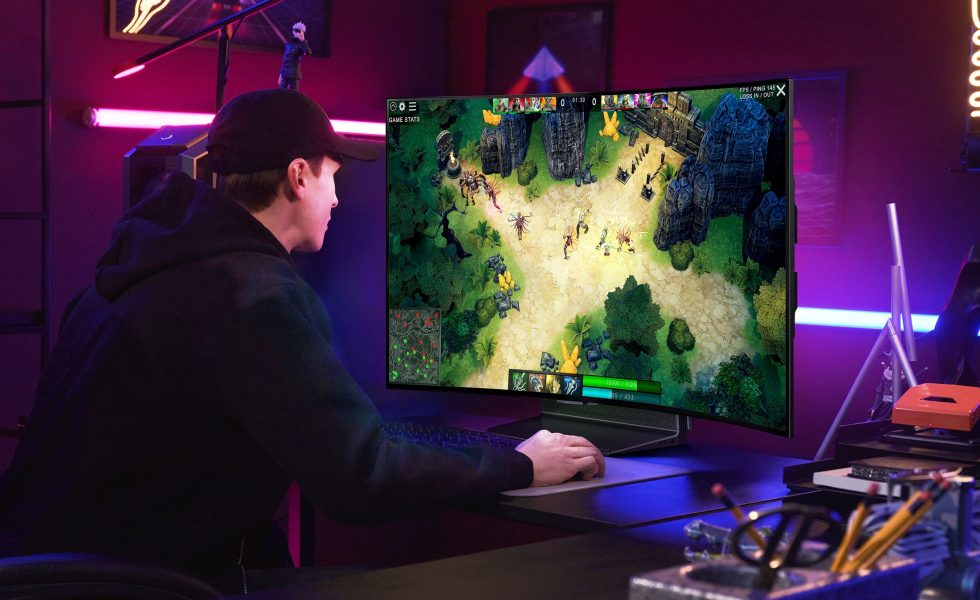
If you’ve been watching display tech lately, you may have noticed an interesting feature: bendable displays. Yes, monitors and TVs that you can bend to be either flat or curved are purportedly coming out soon. The feature is meant to appease those who can’t settle on flat or curved, and most upcoming products feel similarly indecisive, exhibiting identity crises that make it hard to see where they fit… literally. Does something like this belong in a living room, office, or gaming den?
In the case of the LG OLED Flex LX3 4K TV announced Wednesday (no price or release date), the most obvious answer is the living room. It’s a 42-inch TV with a tuner, LG’s webOS, and even LG Display’s OLED Evo technology used in the LG C2 TV. The primary difference from every other TV is that this one has buttons (including buttons on the remote) for changing the screen from flat to a 900R curvature across 20 steps. That provides the potential for an extremely curved TV.
The thing is, you probably don’t want to watch curved television. Vendors tried making this a thing years ago, but as we wrote back then, curved TVs mostly accommodate people sitting pretty close to and directly in front of the TV. That’s not how most people gather ’round the heart of the living room. Living room TVs are frequently shared, with people sitting at various distances from the screen and at varying angles. But up close and centered sounds awfully similar to how most people use monitors.

A Switching Hub is supposed to make it easy to use the TV’s microphone and USB-connected peripherals with an HDMI-connected PC. A dedicated button on the stand toggles between TV and HDMI input. HDMI supports version 2.1, which means the PlayStation 5 and Xbox Series X/S can connect and use the TV’s 4K, 120Hz refresh rate. There’s also lots of Adaptive-Sync compatibility, and you can even adjust the viewable screen size down to 27 inches.
These days, gaming is the most popular use for curved screens, as players sit close to the display and feel the virtual world enwrap them. But many living room setups won’t accommodate that sort of setup. Someone with a lot of flexibility may be able to roll a gaming chair up to the TV for an intense gaming session, but we wouldn’t bet on that driving massive sales of bendable TVs that are sure to come at a premium.
A bendable monitor, too
The Corsair Xeneon Flex 45WQHD240 monitor announced last week (price and availability should be announced this year), meanwhile, seems to target PC gaming dens based on specs. It’s a 45-inch monitor with 3440 x 1440, 21:9 resolution, up to an 800R curve, and a W-OLED panel from LG Display. Gray-to-gray response time is reportedly 0.03 milliseconds. Clearly, this is for serious gamers for whom a curved ultrawide monitor with supremely limited motion blur is the ultimate display.

So why put tacky handles on the monitor that let you bend it curved or flat? Surely it can’t just be for the nauseating feeling that must come with physically manipulating a 45-inch OLED panel that you paid for with your own money. No, it must be for versatility. Many people prefer productivity and other types of computing on a flat panel (although I’ve known some obsessively dedicated workhounds to use curved ultrawides to wrap themselves up in work as well), and the 45WQHD240 should make it so you don’t need multiple monitors for work and gaming.
However, the 45WQHD240’s gaming specs and its likely high price will make it most fitting for extreme gamers who also like ultrawide curved monitors. Users will need a powerful PC with a beefy graphics card to push 4,953,600 pixels at 240 frames per second. The extremely fast video motion processing is made for hardcore players who take the battlefield seriously. And for such players, gaming is a top priority, increasing the chances of the 45WQHD240 mostly being used as a curved ultrawide gaming monitor.








